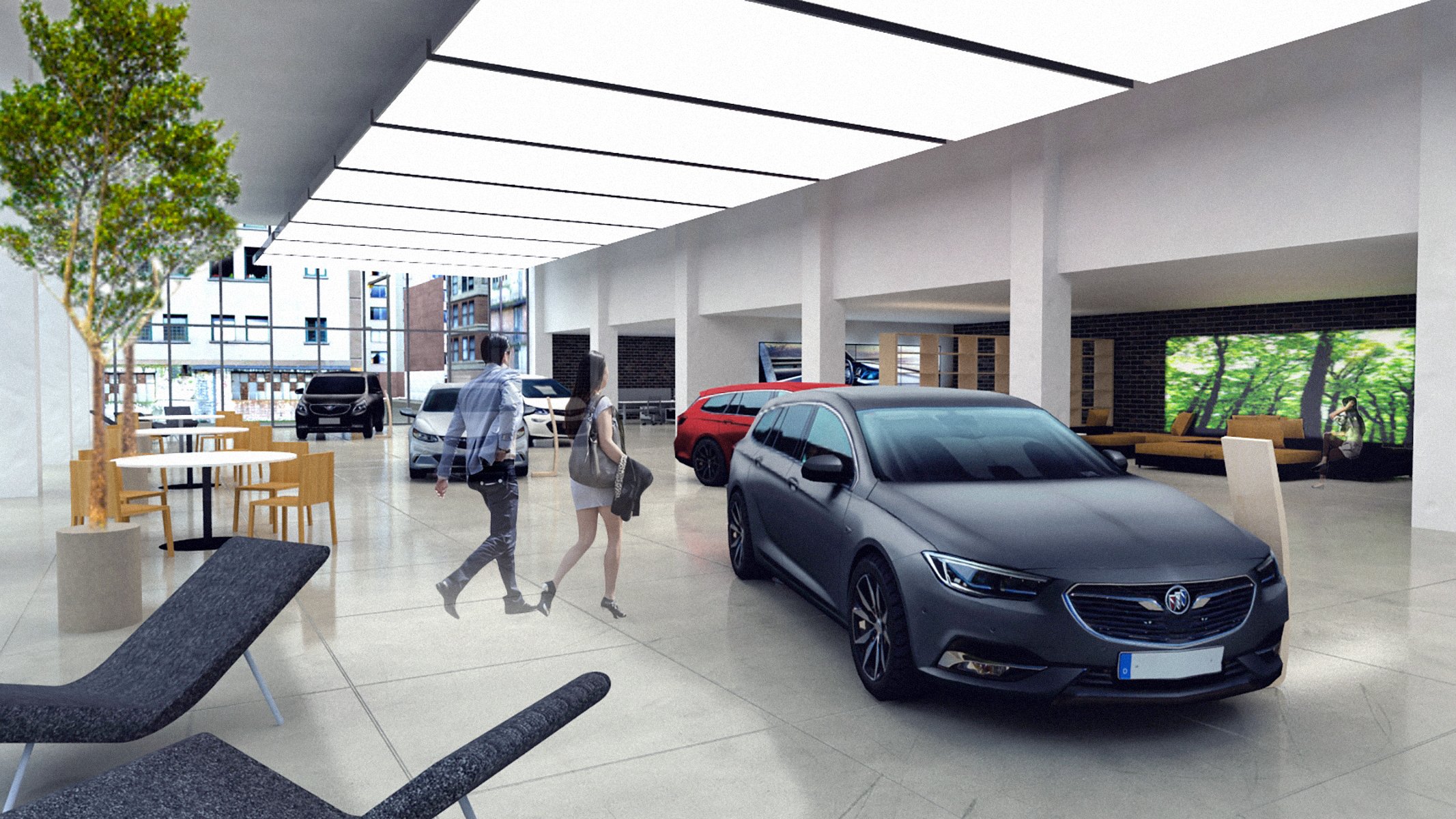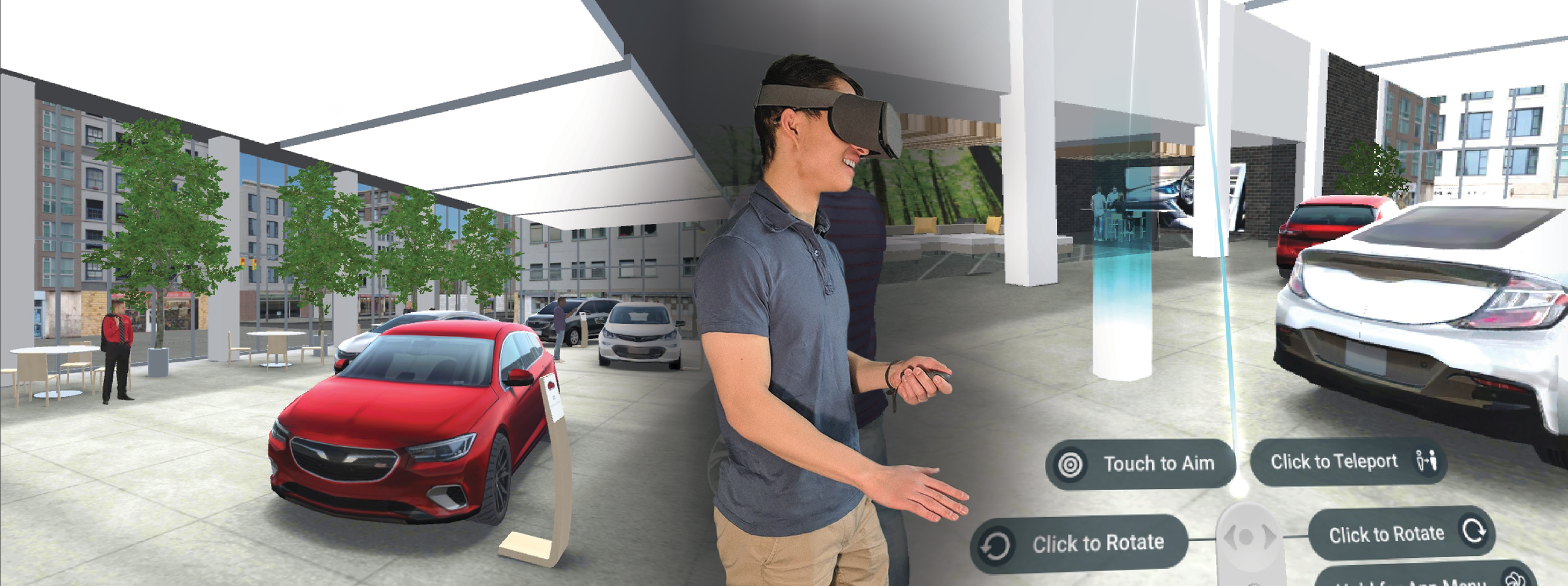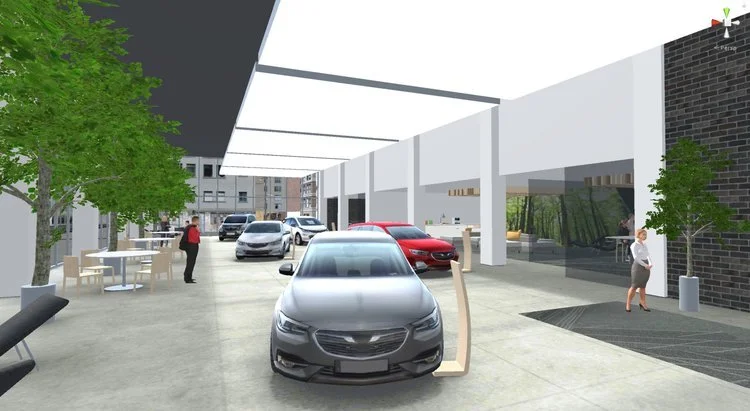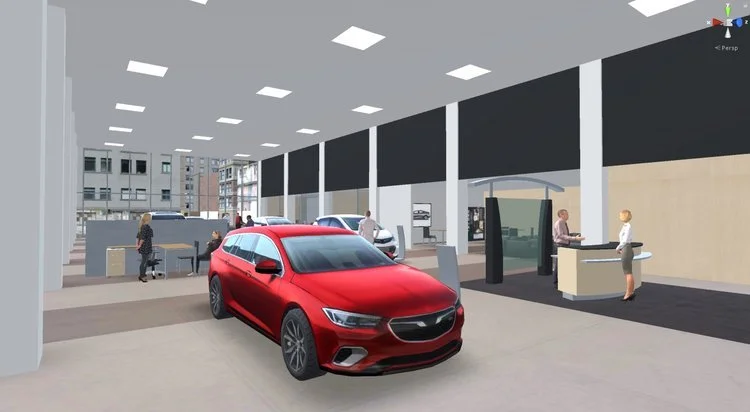
Predicting the performance of a new brand experience using virtual reality
Does biophilic and experiential retail design sell? And, can we prove it using virtual reality?
This research evaluated the new brand experience that I conceived for Buick, comparing it to the brand’s existing showroom design.
Using Unity and Google Daydream, I developed interactive VR models of the existing and concept showrooms for participants to tour and evaluate.
The study investigated the effects of biophilic and experiential retail design on customer experience, brand perception, and purchasing behavior–with special attention on biophilia / psychological restoration as a mediator.
Experiment Design
Two showroom designs: biophilic + experiential, and conventional were evaluated and compared.
The groups of dependent variables measured were
consumer perception— impressions and thoughts, and
consumer behavior— purchasing or follow-up actions.
We also measured emotional variables (restoration and stress) associated with biophilia, to see if it had a mediating effect
Stimuli
Using a head-mounted display and remote, participants were immersed in the showroom, where they could look and move around. Three programs were developed: a tutorial environment, a conventional showroom, and a biophilic & experiential (BERD) showroom.

Biophilic + Experiential
Research shows that vegetation and mimicry of nature in space is psychologically restorative. The experimental showroom highlights biophilic design; it also incorporates adaptive reuse and innovative retail design—as proposed in my Buick brand concept.
Conventional
Serving as the control, this dealership showroom is directly modeled after the current design standards manual of a leading U.S. auto brand. It uses typical architectural layouts and rooms, furniture systems, branded millwork / fixtures, and colors & materials.
Summary of results
-
Hypothesis 1:
Visitors of showrooms with biophilic + experiential retail design will show more positive perceptions.Brand Experience
As measured using the Brand Experience Scale (Brakus et al., 2009),• There was significantly greater brand experience (BES) in the BERD showroom than in the Conventional one.
• Regression analysis found that BERD was significantly positively related with brand experience.
Attention, Interest, Desire, Memory Subscales
As measured using the AIDMSAS Model (Wei et al., 2013),• BERD resulted in significantly higher attention, interest, desire, and memory (AIDM) than Conventional.
• Regression analysis found that BERD was significantly positively related with AIDM.
-
Hypothesis 2:
Visitors of BERD will show more desirable consumer behaviors.Purchase Intention
As measured using the Purchase Intention Scale (Hoppe et al., 2003),• The BERD showroom resulted in highly significantly greater purchase intention than Conventional.
• Regression analysis found that BERD design was highly significantly positively related with purchase intention.
Re-Visit Intention
As measured using modified Purchase Intention Scale (Hoppe et al., 2003),• The BERD showroom resulted in highly significantly greater re-visit intention than Conventional.
• Regression analysis found that BERD design was highly significantly positively related with re-visit intention.
Search, Action, Sharing Subscales
As measured using the AIDMSAS Model (Wei et al., 2013),• There was no statistically significant difference in sharing, action, and search (SAS) between BERD and conventional design.
• Regression analysis did not find a significant association between design and SAS behavior.
-
Hypothesis 3:
Visitors of BERD will experience greater restoration and lower stress, in comparison to visitors of a conventional showroom.Restoration
As Measured using the Perceived Restoration Scale PRS-11 (),• Users reported significantly greater perceived restoration in the BERD showroom than in the Conventional one.
• Regression analysis found that BERD design was significantly positively related with perceived restoration.
Stress
As measured using the ZIPERS (Zuckerman, 1977),• There was no statistically significant difference in perceived stress between conditions.
• Regression analysis found no significant association.
-
Hypothesis 4:
UX / Biophilic Processes (Restoration and Stress) mediate the effects of Design on Consumer Perception and Behavior.After identifying significant correlations within our mediation models, we ran mediation analyses using generalized structural equation modeling in STATA software, which found that:
• Effect of Showroom Design on Attention, Interest, Desire, Memory was totally mediated by Restoration.
• Effect of Showroom Design on Purchase Intent was totally mediated by Restoration.
• Effect of Showroom Design on Re-Visit Intent was partially mediated by Restoration.
Presented at IASDR Conference 2019.




